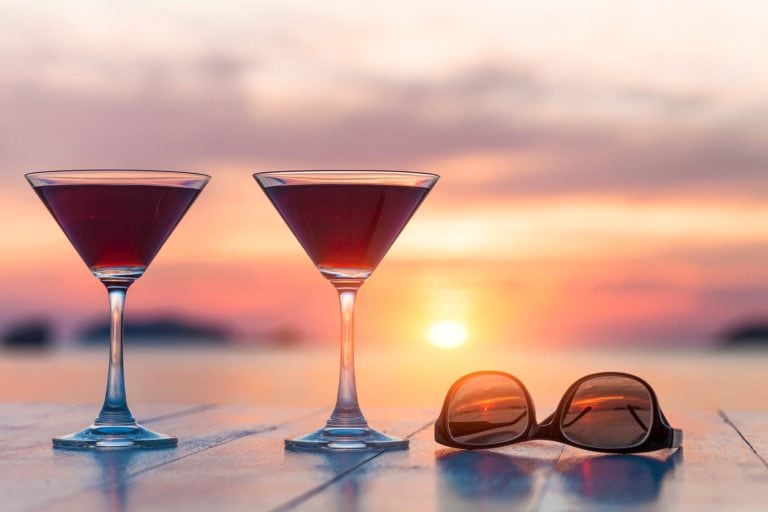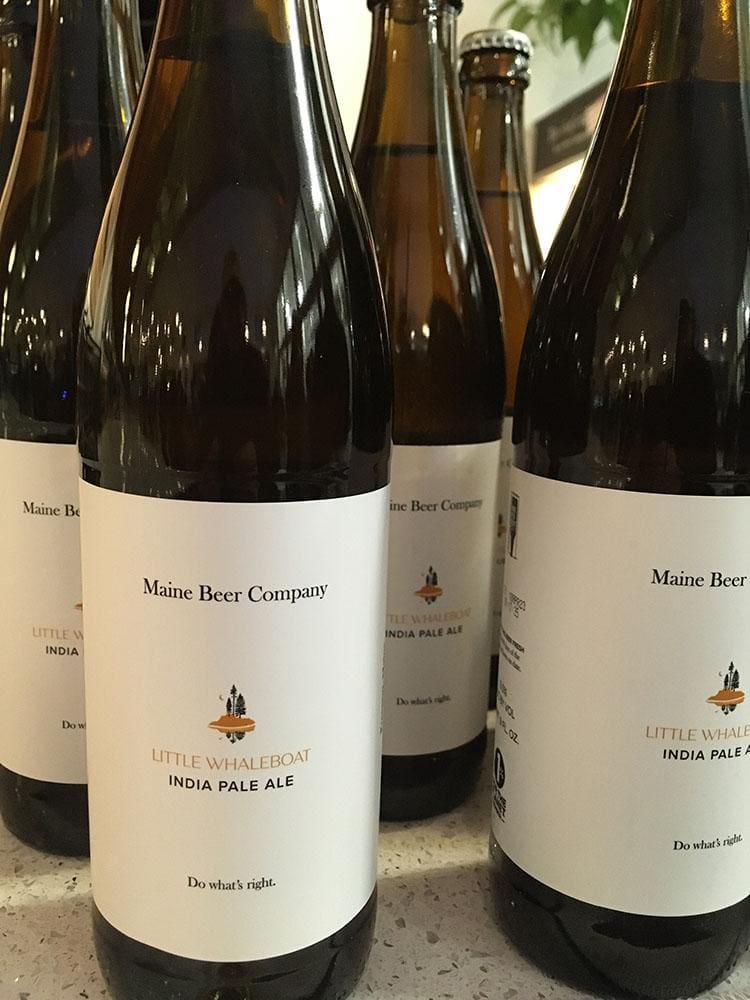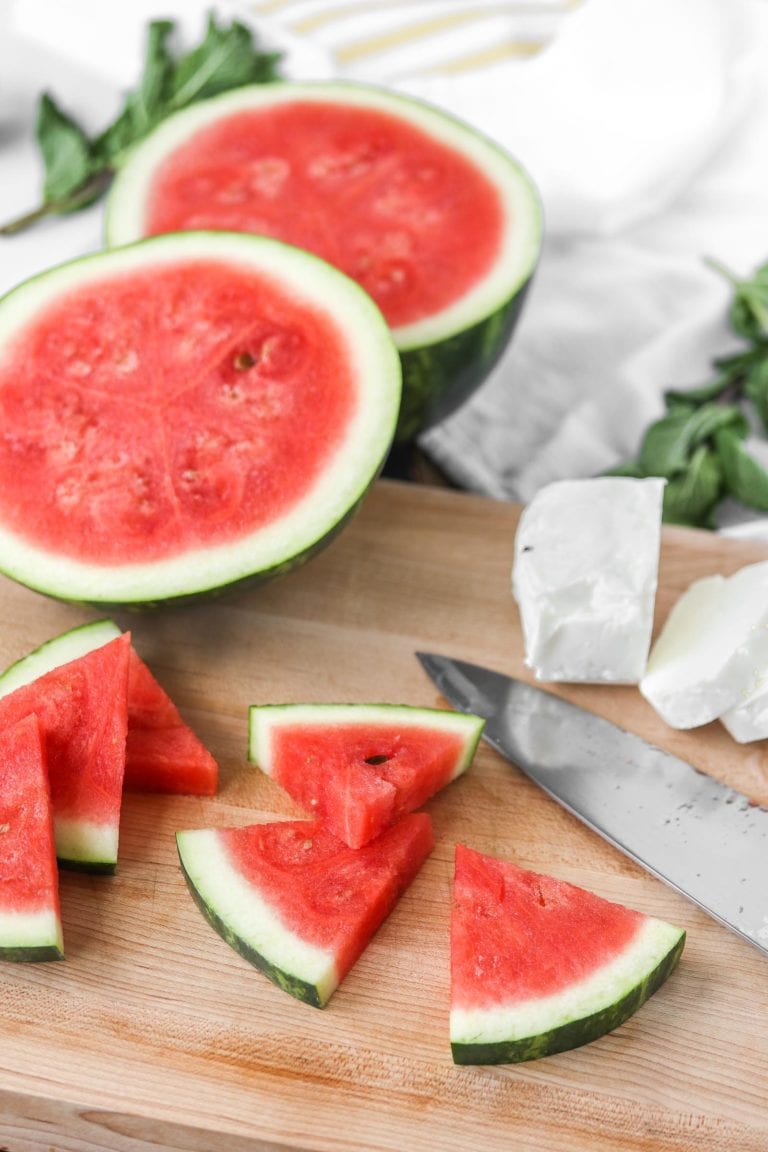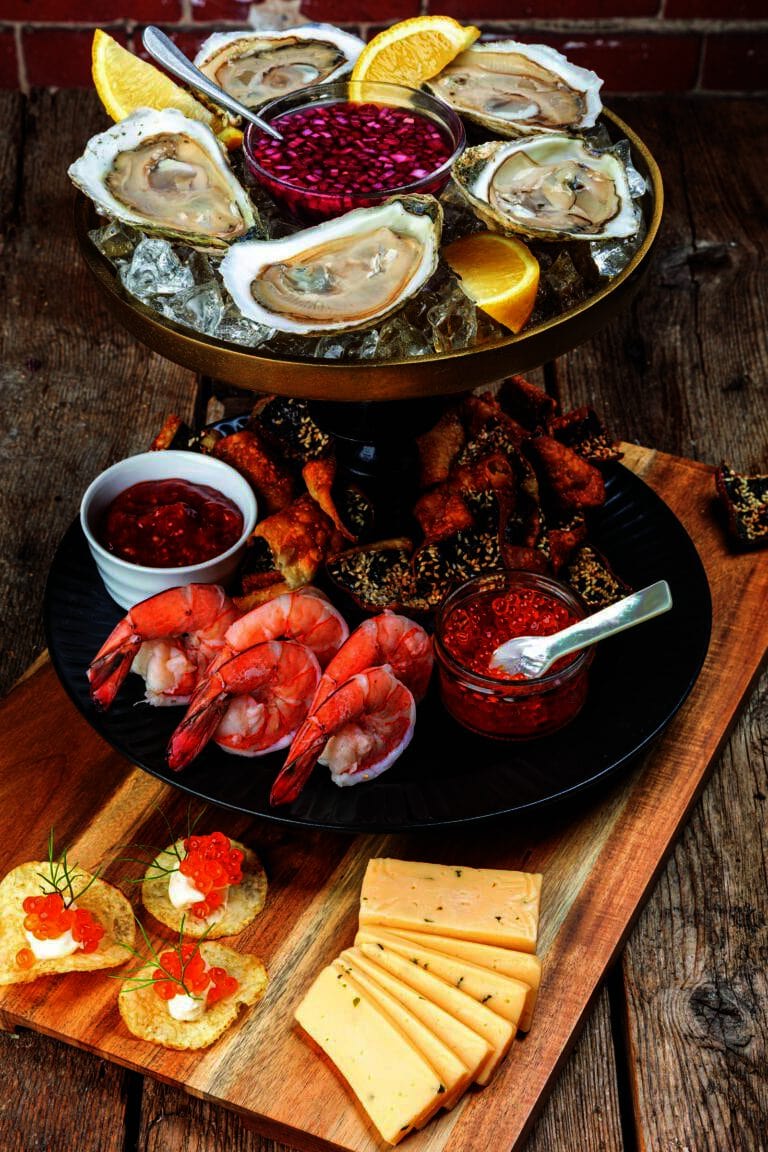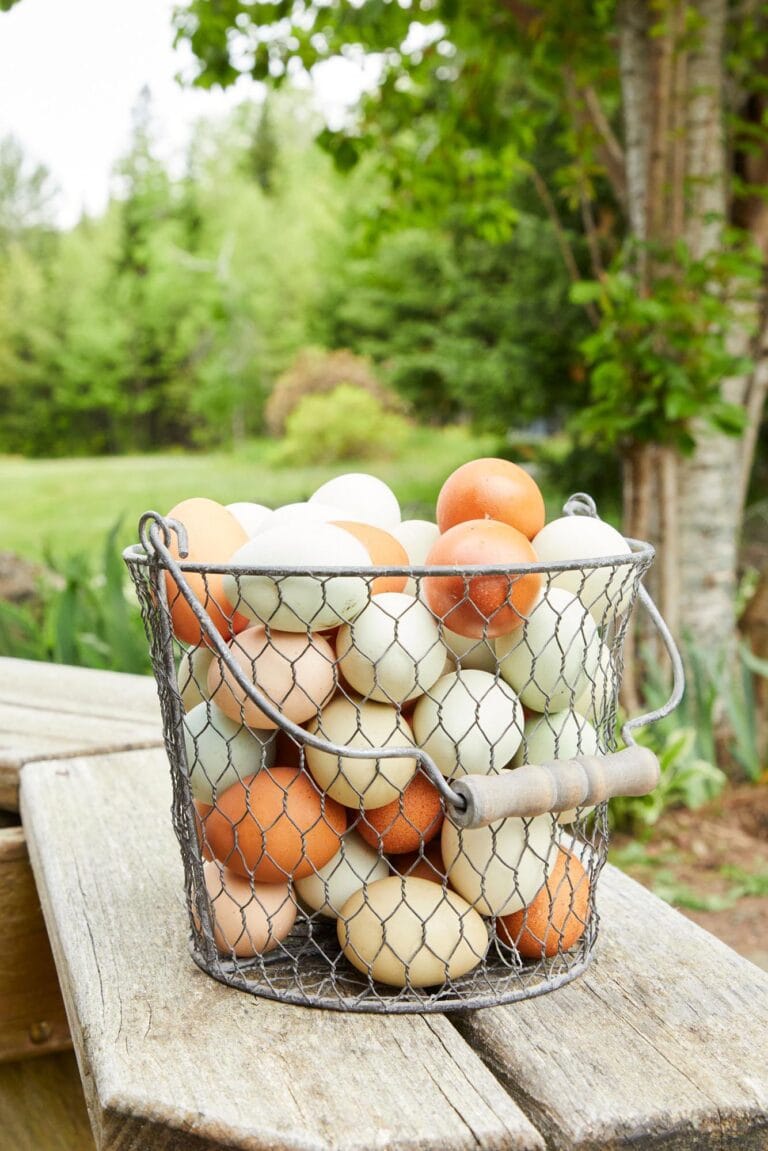On the Damariscotta River, south of Hog Island, our work raft rocks gently in a wake thrown by a neighboring farmer. Our wet storage bays weigh heavy with oysters waiting to be packed and sold. We work a long morning through an outgoing tide. It is only October. Frosty mornings burn off to mild afternoons. Winter is a suggestion; soon it will be a demand.
“Winter isn’t what people picture,” says Amanda Moeser, owner-operator of Yarmouth-based Lanes Island Shellfish, PhD candidate, and distance education adjunct faculty in marine biology and sustainable aquaculture at Unity College. When people think of oyster farming in Maine, she says, they usually conjure visuals of people like her: sun-drenched, laboring in t-shirts, bathing suits, and shorts under July or August heat, “when the bay is so alive.”
I go searching on the internet for images of sea farms and farmers in winter. I find a few social media posts and photos lost in text threads: holiday gifts of cold-weather gear, a crew member standing on ice beside a work boat, a truck plowing snow outside packing houses.
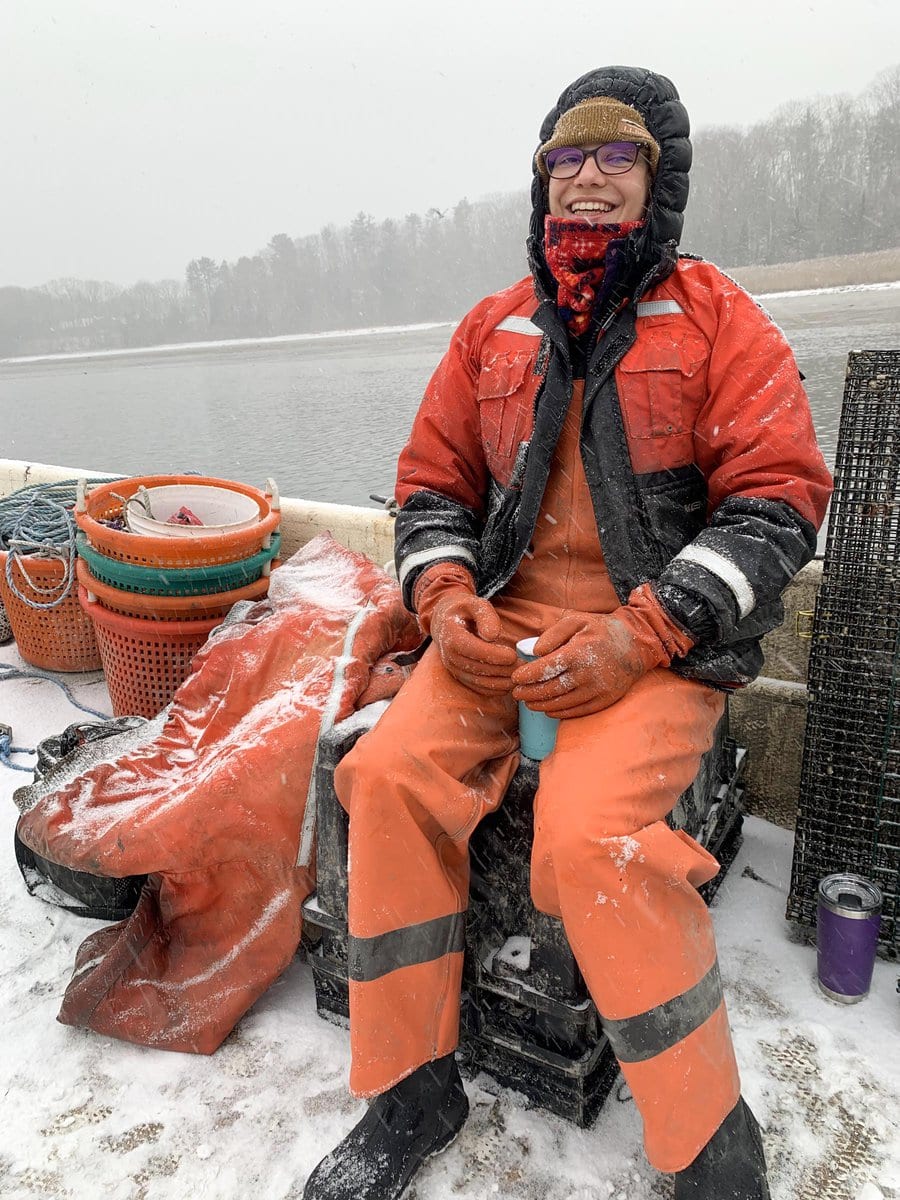
“Alright, here we are. January fourth, South Bristol, Maine. Breaking ice at Peabow Island. Kind of lonely out here,” says Dave Cheney, owner-operator of Johns River Oyster, in a video from his most southerly lease site. As wind snaps against the cell phone’s microphone, the bow of the boat pushes through sheets of ice. He turns the camera toward his wake, water exposed where the vessel has cut. “Supposed to get a foot of snow tonight, so we’re going to break up the ice and, with a northeast wind, it’ll hopefully blow it out to sea.”
Before breaking through any ice, to prepare for the season, oyster farmers who use suspended gear must make overwintering arrangements—that means either sinking cages to the bottom or moving oysters to areas that don’t typically freeze. The idea is to maintain access to market-sized oysters for as long as possible and protect smaller oysters for future harvests. There are also winter projects: gear to repair, equipment to build, grants to seek, and leases to apply for from the state.
“The number of companies operating year-round … has certainly crept up year by year,” says Dana Morse, a leading scientist with the University of Maine Cooperative Extension and Maine Sea Grant programs. He’s also co-owner of NICE Oyster Company, part of the New Meadows River Shellfish Cooperative. There are more aquaculturists out on the water, handling equipment and oysters in the ice, snow, and hibernal winds.
Fat and Heavy Oysters
In late autumn, Eastern oysters, aka Crassostrea virginica, can weigh your hands down. Their bodies extend further toward the edge of their calcic shells. “The flavor profile of a winter-harvested oyster is that of a sweet, plump meat medallion,” says Libby Davis, owner of the Lady Shuckers mobile raw bar, based in Portland.
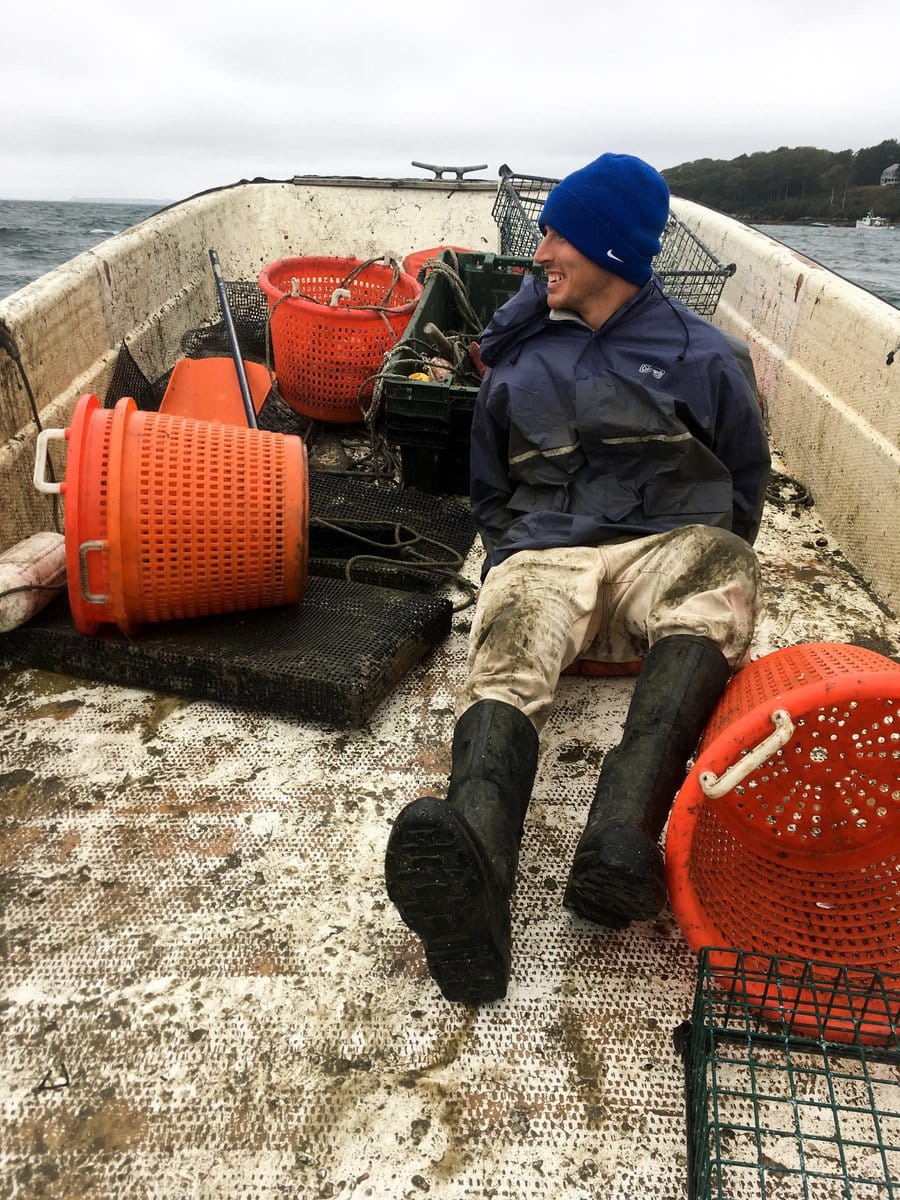
As the season wears on, the bivalves enter a state of quiescence, or dormancy, says Moeser, surviving off stored-up reserves until spring waters trigger an awakening phase.
“As temperature drops, oysters spend less energy toward reproduction and growth, and more effort goes into energy storage,” says Morse. “Heart rate below about 38 or 39 [degrees Fahrenheit] gets very, very slow and approaches zero. Meantime, in the world around them, some organisms are thriving. Blue mussels, scallops, and barnacles continue to grow, and some algae—like kelps—will grow well, too … so it’s still a dynamic time, even in the dead of winter.”
For farmers, too, it’s a dynamic time. With the presence of ice, new intricacies are added to the same cycles. Farmers adapt.
“A lot of the work of oyster farming occurs on land,” says Moeser, listing off some tasks that occupy her post–growing season hours: attending meetings, repairing gear, reporting to state agencies, completing lease work for herself and others.
Those who stay on the water in winter face harsh weather conditions and the risks and isolation they pose. “A thermos of hot coffee is definitely a boat necessity for me,” says Sadia Crosby, owner-operator of OystHERS and member of the Georgetown Island Oyster Cooperative. “Music is good. Keeping a little rhythm, keeping yourself moving.”
Insulated pants, jackets, and wool hats—sometimes ski goggles, wetsuits, or dry suits— cover up t-shirts and sunglasses. Some farmers wear life vests or bright red survival suits. As with other winter water labors, safety is a serious concern. Wolfe Neck Oyster Company farm manager Hillevi Jaegerman and assistant manager Phoebe Walsh, who work in Casco Bay, brought this concern to the Maine Aquaculture Association last year. According to the organization’s outreach and development specialist, Afton Vigue, many farmers were interested in the safety training course held at the Darling Marine Center in Walpole as a result.
“Winter is also a good time to work with the fishing community,” says Moeser. During her first winter, she overwintered in a clammer’s cold storage facility. “Clamming slows down in the winter,” she says. “One of the clam diggers helped me harvest oysters [last year]. He also taught me to navigate in the dark and tricks for working safely in the winter—things like prepping a survival bag and boiling water to dip hands in to keep them functional.” Cheney, a fisherman before starting his farm in 2007, also describes dipping wetsuit caps into hot water to warm them—a trick borrowed from fishing, adapted for aquaculture.
To the Shore, to the Water
But none of this is relevant if you can’t reach the water, says Joanna Fogg, owner-operator of Bar Harbor Oyster Company off Mount Desert Island. “One of the main challenges for winter harvesting, for oysters in particular, is access to water. We are seeing this huge gentrification of the coastline, and we’re just really lucky that we have a space where we can actually get onto it,” she says. A cold-water swimmer, Fogg dons only a wetsuit cap, booties, and a bathing suit to harvest the oysters she winters in a defunct lobster pound, a stone enclosure in the intertidal zone once used by fishermen to store live lobster.
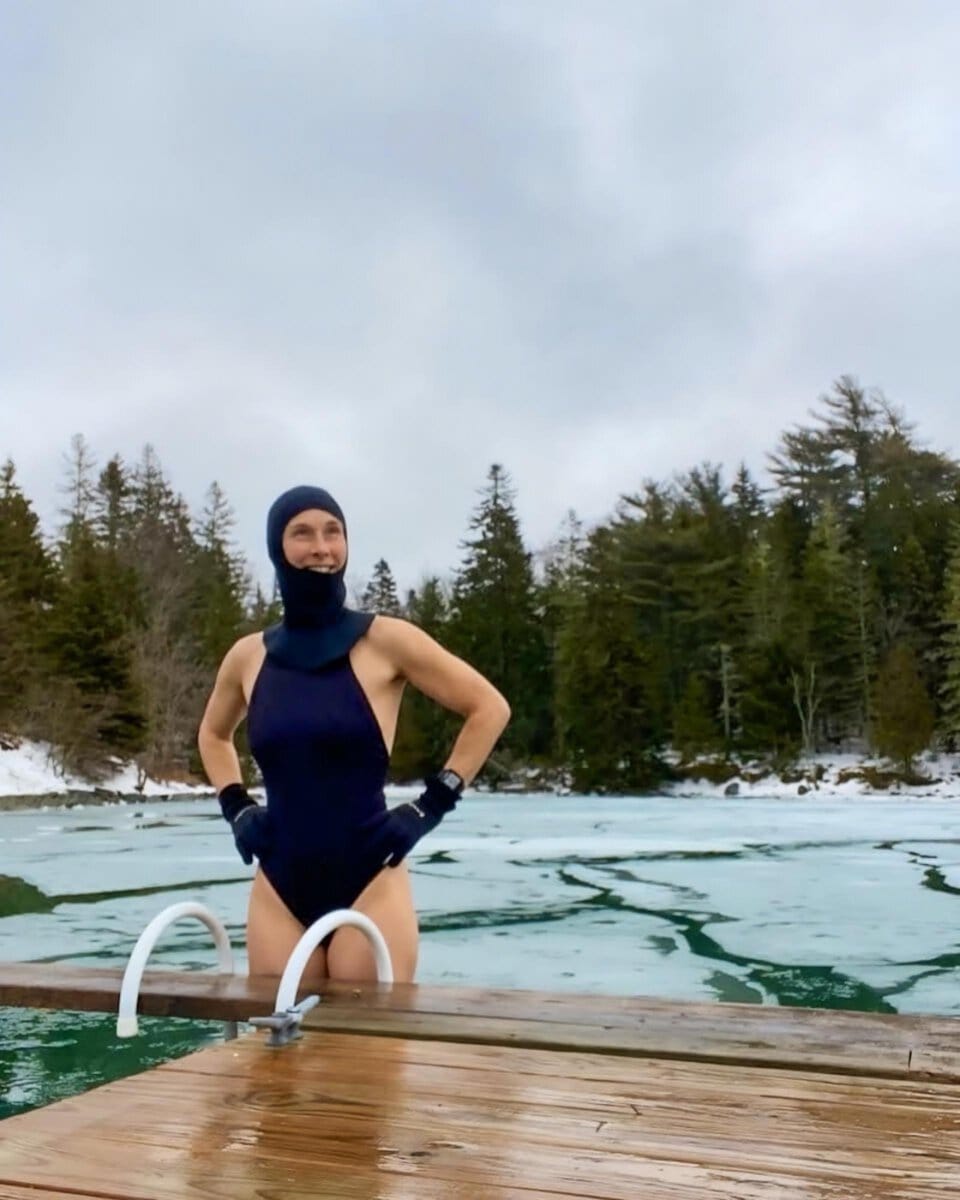
When Moeser started harvesting longer into the winter, she had to switch harbors. “The Royal River freezes up, but the Harraseeket River stays open a lot longer,” she says. “Now I keep my boat in South Freeport at a working dock and have that year-round access. That’s been pretty critical.”
Access to the water also manifests as lease sites without ice coverage—if they are sites with suspended gear, farmers can move market-sized oysters there to keep them alive and accessible throughout winter. “We make every effort to produce year-round,” says Dan Devereaux, co-owner of Mere Point Oyster Company in Brunswick, noting a deeper water location where his crew puts weighted, floating bays to enable winter harvest.
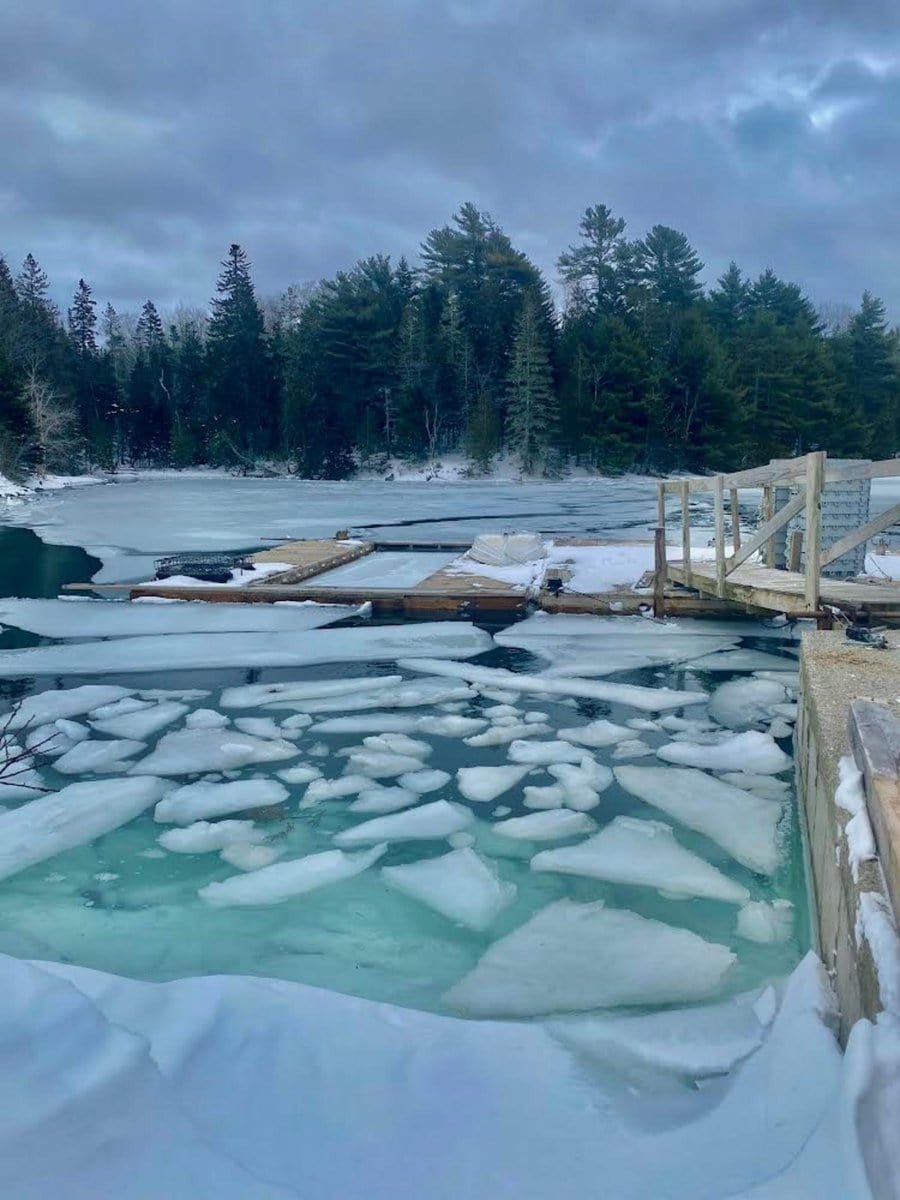
Access is about more than being able to get on the water. “There’s also this element of time,” says Fogg. “A lot of locals are so busy in the summer … it’s [when] we’re all trying to make money.” She describes knocks on her door around the holidays, as neighbors and friends trek through snow to buy oysters, ornaments, and chocolates designed by her daughter—and to say hello. Fogg imagines these winter customers at home with their families, resting, stretching out their summer soreness, slowly enjoying—perhaps even savoring—the oysters. “We’re also hard-working, year-round local people, and we want them to be a part of it,” says Fogg.
Other questions about access lay not-so-dormant beneath the surface. Who eats oysters? How, when, and at what cost? If the harvest season extends for more farms, will it influence how locals interact with the farmed shellfish? “The benefits and products of aquaculture, similar to small-scale fisheries, should be accessible and affordable to the community in which we live,” says Moeser. As an example of an alternative model, she points to Emily Selinger of Emily’s Oysters, who sells year-round at local farmers markets and uses community-supported aquaculture schemes that work like community-supported agriculture ones.
Warming water
Back out on the river on that October day, we shed our hats and jackets. Crew at neighboring Dodge Cove Marine Farm—and others, passing by in skiffs—do the same. The day is warming. So is the climate, meaning winter is not what it once was. In 1998, when Morse started at Maine Sea Grant, it was unusual for farmed oysters to spawn in the river, he says. “Now spawning of farmed oysters on the Damariscotta happens pretty much every year. This is a function of the waters warming and being warm for a longer period of time. We generally get less ice cover now than back then, too,” says Morse.
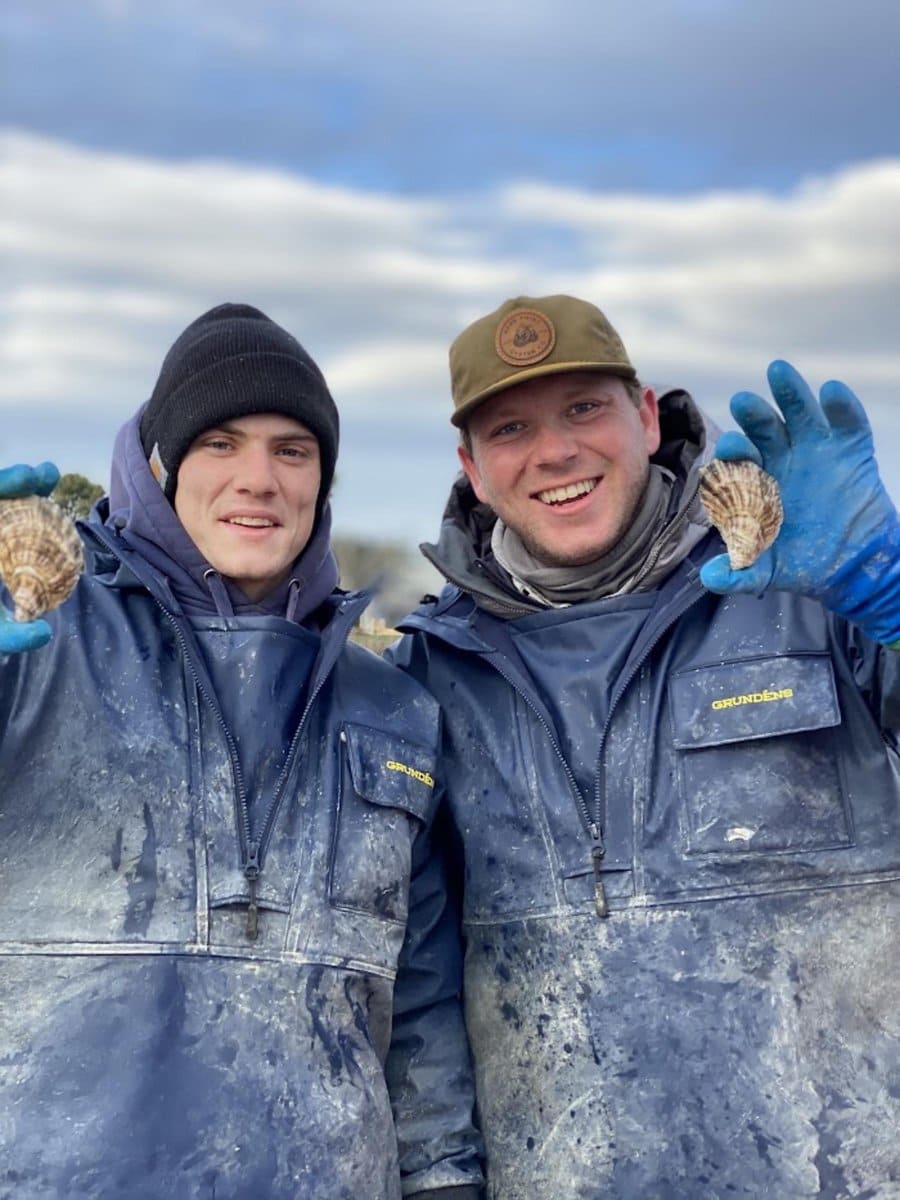
Blackstone Point Oysters farm manager Ryan Saul and I, a farmhand, sit down for lunch on our raft. Soon we will sink our cages and start on winter projects. It will be my first winter working this river, so I ask him about it. “There are definitely times when you’ve got to have the harvest ready, you have to have the order out the door. And sometimes you don’t get to pick that,” he says. “It is what it is, and you do the best you can.”
Saul recalls evergreens against pewter sky. Late sunrises. Cold-weather emergency plans. Many years of sinking gear on a farm that stays on the water later into the winter than we will this year. “You’ve just got to stay warm,” he says.
There is a seascape-in-blizzard kind of clarity to it: Keep the gear safe and the oysters alive and stay warm while doing it.









